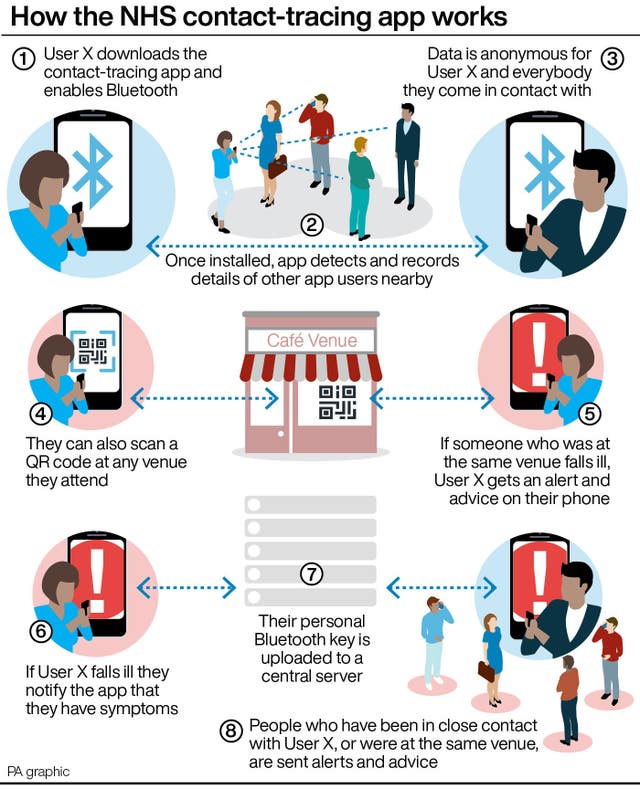No area in England ranked ‘low’ risk within Covid-19 app as virus cases rise
In the current environment it is not considered appropriate for anywhere in England to be deemed ‘low’ risk, the DHSC said.

No local area in England is considered a low risk coronavirus zone within the nation’s new contact tracing app, as cases continue to climb.
The NHS Covid-19 app was rolled out across England and Wales on Thursday after months of delay, designed to automatically alert people of anyone who tests positive that they have been close to.
One element within the app is a localised risk level based on the first part of a person’s postcode.
But in the current environment it is not considered appropriate for anywhere in England to be deemed “low” risk, the Department for Health and Social Care (DHSC) said.
This is to reflect the general increase in infection rate across the country, the department added.
The rank can be anywhere from low, to medium, to high.
In England, the localised risk level is determined by data from the Local Authority watch list, though the list itself most recently only highlighted 44 areas of intervention, three on enhanced support and 11 marked as concern.
In Wales, the localised risk level is determined each week by the Welsh Government.
It comes after the UK’s Covid-19 threat level was ramped back up to level four by the Joint Biosecurity Centre (JBC) earlier this week.
Meanwhile, the NHS Covid-19 app has shot to the top of the download chart on both iOS and Android since being launched, with more than one million downloads confirmed on Android alone.
DHSC said it expects to release an update on exact download numbers across both operating systems on Monday.
On Thursday, the app was hit by complaints from some users that they are unable to download it because of the age of their mobile phone.

Apple iPhones need to be running the iOS 13.5 version of the firm’s software, released last year but available to devices several years older, while users of Google’s Android require version 6.0, which was rolled out in 2015.
“The more people who download the app, the more people who may have Covid but otherwise wouldn’t be traced should be identified and instructed to isolate,” said Dr Chaand Nagpaul, British Medical Association (BMA) council chairman.
“The use of the app does not diminish the pressing need to have sufficient testing capacity, and must complement a properly functioning national test and trace system which can also quickly identify local outbreaks.”





